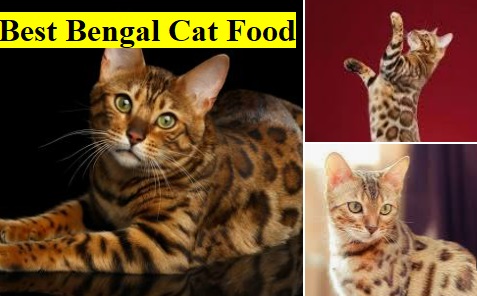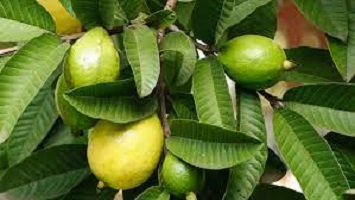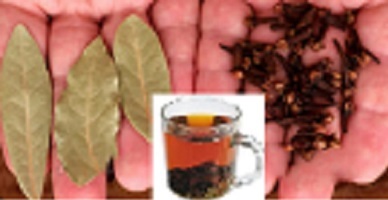Best Bengal Cat Food ~ Raw Diet Recipe
Best Bengal Cat Food Raw Diet Recipe
The Bengal is an exotic cat that is known for its wild appearance and active personality. It is a mix between the Asian leopard cat and the Egyptian Mau.

No matter how unusual, Bengal cats are still cats and require a diet high in meat.
As a cat parent, you should ensure that the diet you select is appropriate to support your cat’s maintenance of its health and energy, be it dry, wet, raw, semi-moist, or homemade.
It requires some investigation and the development of a well-tailored feeding plan that will provide your Bengal with the necessary nutrients.
Bengal cat diet ~ What Do Bengal Cats Eat?
Does the diet of Bengal cats differ from that of other cat breeds? Bengal cats require a diet rich in meat or fish that is low in carbohydrates, and high in protein, and fat. Despite their wild ancestry, they have the same dietary requirements as other cat breeds.
If you want your Bengal cat to feel good and live a long, healthy life, the diet you provide is of the biggest significance.
Being carnivorous, Bengal cats and domestic cats benefit greatly from being fed high-protein foods.
To fully comprehend the Bengal cat’s diet, it is necessary to consider his progenitor, the Asian leopard, who mostly consumes meat from animals like birds, reptiles, and insects.
But they must consume foods high in protein, primarily from meat, in their diets, much like any other obligate carnivores.
Bengals are distinguished for their intense appetites for meat. Turkey, beef, lamb, fish, and chicken are all great sources of protein. It is generally not advised to feed your cat plant-based food.
Feeding Your Cat
Cat feeding is undoubtedly a contentious subject! Food businesses constantly bombard us with advertisements.
Friends of ours have advised us that “this is the only thing you should feed your cat.”
Which cat diet is ideal for Bengals? What’s the best cat food for Bengals?
You need to know what a good diet for ANY cat looks like to know what one looks like for your Bengal cat.
All cats have the same dietary requirements because they are obligate carnivores, which means they cannot obtain their nourishment from plants and must eat meat to thrive.
A balanced meat diet is the healthiest thing you can feed your cat.
All cats are carnivores, and raw meat is what they typically eat.
It makes no difference if the cat is big or small, domesticated or wild. The fact that cats are obligate carnivores has not changed as a result of domestication.
In reality, the main reason we tamed them was to hunt pests. The only source of nutrition for cats is meat; they cannot survive without it. For their life, they depend on meat and the nutrients that can only be found in the flesh.
What therefore should a Bengal cat be fed?
Like other cats, Bengal cats are obligate carnivores, which means that meat must be a part of their diet.
Because of their well-tuned digestive system, they can easily obtain all the essential fat, vitamins, and proteins from meat.
The following are the primary food suggestions for Bengal cats:
Being aware that Bengal cats inherited a very short intestine and, consequently, a particularly sensitive digestive tract is important.
These nutritional recommendations only apply during your kitten’s period of adjustment to its new home.
Both switching to new dry meals and introducing new dietary components are gradual and with extreme caution.
The average time for adaption is one month. Your kitten’s health and future development are dependent on its diet. A well-balanced diet for your pet should have all the required vitamins and micronutrients in the right amounts.
After your kitten adjusts to its new home for a while and the dietary plan establishes, you must then keep an eye on its weight. Bengals are frequently predisposed to gaining weight; in this situation, switch to lower-calorie foods and/or reduce portion size.
You can feed Bengal cat/kitten
- Store-bought dry goods
- Organic food
- Combination of both
You must decide for yourself which of these types of food is the best; there is no prevailing opinion.
Dry Commercial Food
Because it requires less preparation time, is balanced, and has all the essential elements, food that has been produced commercially is more practical.
Both canned and dried food are acceptable. Dry food must be of the highest caliber. They should ideally only contain natural substances. Use high-quality goods from renowned manufacturers.
Never use cheap ingredients! Poor-quality foods use hides, bones, and feathers for protein, as a replacement for meat.
Their use will not gratify your cat’s nutritional requirements and might cause illness
Additionally, they have an excess of minerals, which raises the danger of kidney stones.
Others Include:
- Avoid Foods High in Grains
The majority of commercial cat food options are high in grains like barley, rice, corn, or wheat.
This grain is intended to contribute to the inexpensive bulking up of cat meals.
Therefore, the first piece of advice for feeding your Bengal is to stay away from anything that contains grains.
Simply put, they are unable to digest huge amounts of grain, therefore feeding your Bengal a lot of grains may cause stomach issues.
Ensure you buy grain-free cat foods; these may be more expensive than generic ones, but your Bengal will thank you.
- Raw/fresh meat
Even though certain vets are often against this practice, the majority of Bengal cat owners feed their animal’s raw meat.
However, a diet high in fresh meat can help with stomach and skin concerns.
If you choose to follow this path, you must conduct in-depth research to make sure you incorporate meat, organs, and bones in the proper proportions.
For best results, use supplements like Kitty Bloom with a raw diet that includes chicken, beef, rabbit, and pre-made combinations.
- Fish
Bengal cats like fish as well, but you must only feed them little amounts of it because too much fish consumption might result in other nutritional deficits.
Given its high iodine level, give your Bengal white fish at least once each week.
Oily fish, which keeps your Bengal’s coat shining, is a great source of nutrition in tinned fish, such as sardines, mackerel, and pilchards.
Additionally, it keeps the joints flexible and strong.
Natural Feed
Because they are innate predators, Bengal cats should consume 70% lean raw meat. Meat should be pre-frozen solid to prevent parasite infestations.
Give food at room temperature or just slightly heated. Food that is too hot to eat or too cold to eat (from the refrigerator) cannot be given to pets.
Keep in mind that cats are predators, so don’t feed them pizza, smoked chicken, macaroni, or chopped cabbage. Try not to introduce your diet to your cat because this can lead to several illnesses.
- Fish or chicken bones can splinter and cause choking, as well as injury to the stomach and esophagus, as well as intestinal blockage.
- Pork, lamb, and poultry, except chicken, include significant fat content and are difficult to digest. When consumed uncooked, they may result in worm infestation, occasionally fatal infectious illnesses, or both.
- Fried foods and foods that are greasy, spicy, pickled, smoked, or canned—like sausages or canned goods—cause poor metabolism and indigestion. Animals can develop chronic illnesses and lose their aesthetic appeal.
- Sugar, chocolate, cakes, candies, and other sweets These foods interfere with metabolism, impair immunological function, dull fur, and promote tooth decay. Theobromine, which is present in chocolate, is poison. potentially fatal.
- The starches in potatoes are not digested. Potatoes are nutrient-void and may give you indigestion.
- Beans (soy, peas, kidney beans) Beans do not digest, and they promote bloating and intestinal fermentation.
- Spices and salt are not utilized because they have no benefits and could even be harmful.
- Vitamins and medications designed for humans do not function for cats since they have different metabolism. The kidneys of cats can be poisoned by numerous drugs used for humans, which can be fatal.
Bengal cat allergies to foods
Compared to other cats when it comes to Cat Food Allergies, Bengal cats don’t require a special diet, but there are some health concerns to be aware of.
A few diseases have been identified in the breed, including pyruvate kinase deficiency, progressive retinal atrophy, flat-chested kitten syndrome, and hypertrophic cardiomyopathy.
Additionally, Bengal cats are susceptible to hip dysplasia, so it’s crucial to prevent them from gaining too much weight. Weight gain can exacerbate diseases like hip dysplasia.
Like any cat, Bengals are susceptible to food allergies. To treat their allergies, it’s essential to identify what they are allergic to.
The most obvious symptoms of food allergies in Bengal cats are comparable to those in people. Some of the symptoms include gastrointestinal distress, skin sores, and itchy skin.
As a result, it is advised that you do a food trial with your veterinarian’s guidance if you think your cat may be allergic to something.
They might advise trying a novel protein diet or a hypoallergenic diet for at least six weeks before evaluating the outcome.
Once you’ve determined which foods are causing your cat’s allergic reaction, treating the problem is as easy as keeping the offending foods out of your home and out of reach of your cat.
Daily Calorie Intake for Bengal Cats
Purchasing dry cat food from a conventional supermarket may be a cost-effective option, but occasionally these meals come with preservatives and other additives that aren’t essential.
This means that a diet that includes more high-quality wet food will be far more effective for your Bengal cat than one that does not.
It’s important to feed your Bengal a high-quality, nutritionally complete diet high in meat-based proteins to support optimum health.
So how much should your Bengal cat be fed? More is usually preferable for a young Bengal kitten. You should weigh your Bengal cat to get a precise measurement before checking the calorie content of the food in your Bengal cat diet plan to choose the ideal food for your kitten.
In general, Bengal kittens consume between 40 and 100 calories each day, depending on their weight.
Bengal cats reach adulthood weighing between 8 and 15 pounds. They must consume between 2% to 5% of their body weight each day.
If your cat has a healthy diet but is frequently ill, bloated, or dehydrated, you might want to consider whether or not they’re getting too much food.
For most adult Bengal cats, a diet of about 25 to 30 calories per pound is sufficient, but this depends on your cat’s size and activity level. If you’re concerned, ask your veterinarian about this.
Try to stay away from filler foods and foods with confusing ingredients. The food for your Bengal should be straightforward and nourishing to encourage healthy growth and long, fulfilling life.
Raw Food Diet for Bengal Cats
- Fresh turkey is a fantastic source of omega-3 fatty acids and protein.
- Fresh meat’s lean cuts are a good source of protein and fiber.
- Excellent sources of protein include chicken and turkey. Turkey is generally preferred to chicken by cats. Try both and see which functions the best.
- Remember that a Bengal should consume a variety of vitamins and minerals in addition to protein in their diet.
- If raw meat is not properly processed, it may result in food poisoning. Only one serving of the meat every meal should be made, and it must be fresh. More than 30 minutes should not pass while the raw meal sits at room temperature.
If you plan to feed your Bengal mostly raw food, make sure the diet is balanced and nutritionally sufficient.
If your cat has any underlying medical issues, consult a nutritionist or your veterinarian before making any changes to the food.

What You Should Never Feed Your Bengal? Foods That Bengals Need To Avoid
The following meals can cause your Bengal cat to experience digestive troubles like diarrhea or even worse medical conditions:
Bengal cats should only eat cat diets that adhere to Bengal’s nutritional recommendations.
The following foods are recognized as contributing to diarrhea and other health issues in Bengal cats.
- Theobromine, an alkaloid found in chocolate that is deadly to cats, is present in the food. Theobromine poisoning can be fatal if not handled quickly.
- Avocado – Bengal cats are poisoned by a compound called persin that is present in avocado leaves, bark, seeds, skin, and pits. Small doses may result in gastrointestinal discomfort, while bigger doses may result in more severe symptoms.
- Alcoholic beverages – Because alcohol is so intoxicating, it can harm cats’ brains and livers fatally. Therefore, whether it is wine, liquor, beer, or any other alcoholic food, it is bad for your cat.
- Dough yeast – When a Bengal cat consumes yeast ferments, it results in alcohol poisoning.
- Liver: Bengal cats can eat modest amounts of liver, but consuming too much could be harmful. It may result in vitamin A toxicity, which harms a cat’s bones.
- Macadamia nuts: Macadamia nuts are high in fats, which can make you feel sick to your stomach and make you throw up and have diarrhea.
- Foods that include Xylitol – Xylitol is a naturally occurring sweetener that is derived from the fibers of vegetables and fruits and is found in candies, snacks, gum, and baked products. This sweetener can be dangerous since it induces a sudden drop in blood sugar.
- Caffeine – Caffeine is extremely hazardous, especially in big doses. Coca-cola, chocolate, and cocoa all contain it.
- Raw tomatoes and potatoes both contain glycoalkaloid solanine, which might harm your Bengal cat’s digestive system.
- Bones: A bone might splinter, block, or cause a cat to choke, which can result in intestinal perforation.
- Organic eggs
The tendency to overfeed your cats is another error people make with Bengal diets.
Overfeeding is easily possible if you’re not careful with the abundance of concentrated cat meals that are readily available.
Bengals can eat a lot more food than they require since they currently have a much more comfortable existence than their predecessors did in the wild. Therefore, be sure to monitor your cat’s diet to prevent gas, diarrhea, and bloating.
Summary
Bengal cats are rapidly gaining popularity in the UK, Australia, and all of North America.
Due to their athleticism resembling that of a jungle cat and their high levels of energy, this cat is unique and requires a diet high in protein.
FAQ
Bengal cats for sale near me ~ Bengal cat price ~ how much is a Bengal cat
Ranging from $1,500 to $2,500
Bengal kitten costs differ based on the breeder, the age of the cat, and the kitten’s pedigree.
A Bengal kitten often costs between $1,500 and $2,500. The average amount is around $2,000. Price points might, however, range from $800 to $10,000 or more.
Bengal cats colors
Bengals can be found in a range of hues. categorized as colors that are known and unknown.
The four widely accepted primary colors are brown, silver, snow, and blue.
We also have;
- White Bengal cat
- Snow Bengal cat
- Silver Bengal cat
- Blue Bengal cat
- Marble Bengal cat
- Brown Bengal cat
- Charcoal Bengal cat
Bengal cat hypoallergenic ~ Are Bengals Hypoallergenic?
For a variety of factors, Bengal cats are among the top 10 most hypoallergenic felines. Comparing Bengal cats to the majority of other breeds, most people who are allergic to cats either don’t respond at all or react less severely.
Bengal Cat Adoption ~ Bengal Cat Breed ~ Why Are Bengal Cats So Special?
The Bengal cat’s distinctive coat distinguishes him from other felines. The only breed that can have rosette markings that truly represent its wild Asian leopard lineage is the Bengal. Spotted or marbled coats are both stunning and common.
Is a Bengal tiger, or not
Bengal tigers, sometimes known as Indian tigers, are found in India. They make up roughly half of all wild tigers and are the most widespread kind.
Are Bengal tigers the same as tigers in general? Are a Bengal and a tiger the same thing?
Although Siberian tigers are the largest tigers ever recorded, Bengal tigers appear to be the largest of the tiger species.
Consequently, the Bengal tiger is the second-largest member of the tiger species. Today, the only places where you may view a wild Bengal tiger are Bangladesh, Bhutan, India, and Nepal.
What should Bengal cats consume?
Bengal cats require comprehensive and balanced cat food that is high in protein because of their active temperament.
Two options are Pro Plan Comprehensive Essentials and Pro Plan True Temperament dry and wet food.
Can Bengal cats eat rice?
Rice is edible for Bengal cats. Make sure the rice you are feeding your Bengals is cooked if you are feeding them rice.
Bengal cats may eat rice without harm, but you must be careful with the amount you give them
Do Bengal cats eat raw meat?
Because they are innate predators, Bengal cats should consume 70% lean raw meat. Meat should be pre-frozen solid to prevent parasite infestations.
Give food at room temperature or just slightly heated. Food that is too hot to eat or too cold to eat (from the refrigerator) cannot be given to pets.
What foods cause allergies in Bengal cats?
What additional meals are bad for Bengal cats?
- Citrus fruit – In cats, the essential oils in citrus fruits can lead to severe dermatitis.
- Vegetables made from allium plants have a high concentration of oxidants, which lead to the destruction of red blood cells.
- Grapes – It is still unclear exactly why grapes are harmful to cats.

Bengal cat raw diet
Because they are innate predators, Bengal cats should consume 70% lean raw meat. Meat should be pre-frozen solid to prevent parasite infestations.
Give food at room temperature or just slightly heated. Food that is too hot to eat or too cold to eat (from the refrigerator) cannot be given to pets.
Can Bengal cats eat raw chicken?
Cats can consume raw chicken of course. The traditional argument in favor of feeding cats a raw diet is that doing so enables the cat to eat what it is biologically able to digest.
Bengal cat food wet ~ what is the best-wet food for a Bengal cat?
Good: Food in cans
All of our cats adore Tiki Cat Chicken Consomme, a premium canned food. This is a wonderful option if you don’t like the raw food selections mentioned above.
The healthiest option, according to us, is Tiki Cat, but if your cat enjoys gravy, he’ll adore Weruva! They also employ ingredients of the highest caliber.
Bengal cats can consume dry food
Both canned and dried food are acceptable. Dry food must be of the highest caliber. They should ideally only contain natural substances.
Use high-quality goods from renowned manufacturers.
Top 5 Best Cat Foods for Bengals: Best Dry Food for Bengal Cats
- The best overall cat food is Smalls Fresh Bird.
- Best Value: Purina ONE Tender Selects Blend Real Salmon Dry Cat Food.
- Dry cat food with the Wilderness Chicken Recipe by Blue Buffalo
- Adult Dry Bengal Cat Food from Royal Canin
- Best for Kittens: Purina ONE Healthy Kitten Formula Dry Cat Food.
Bengal Cat Raw Diet Recipe ~ Raw Diet Recipe
Ingredients:
- 2365g (83.5 oz) of chicken things
- Chicken Hearts: 14 ounces (400g)
- 85g (1.4 oz) of chicken liver
- 40g (1.4 oz) of supplements
- Water: As necessary
Methods:
- Firstly, chop up the chicken pieces and place them in a big basin. Then put the chicken hearts.
- Secondly, put the chicken liver, vitamins, and water in a food processor or blender and puree it.
- After that, combine the ingredients with the meat, and divide into serving-sized containers or Ziploc bags.
Best wet food for Bengal cats
For adult Bengals, the Pro Plan Prime Poultry and Beef Variety Pack from Purina is the best-canned food option.
Three distinct recipes are included in the package, each of which has real meat mentioned as the first ingredient and is sure to please your cat in terms of flavor and texture.
Is Royal Canin pure feline being phased out? Is Royal Canin pure feline being discontinued?
On November 30, this product will no longer be available; instead, we suggest upgrading your cat to Royal Canin Fit 32 cat food.


